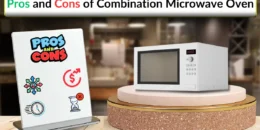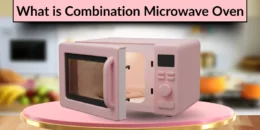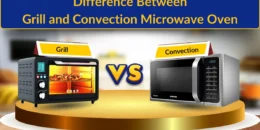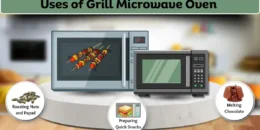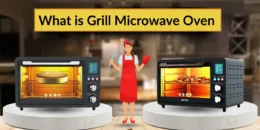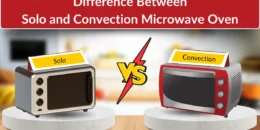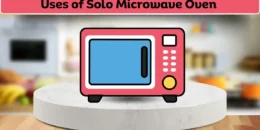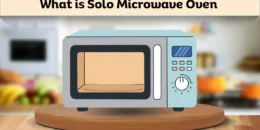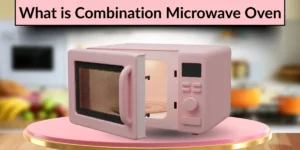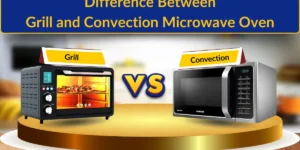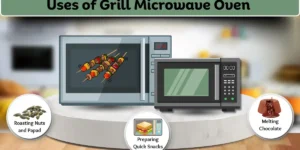Ovens cook food by using heat, air, or steam. That’s why there are many types of ovens, each made for a different cooking purpose. Some bake, some grill, and some roast evenly. In this detailed guide, you’ll discover 20 types of oven, how they differ by design and heating method, and their best uses for home and commercial kitchens.
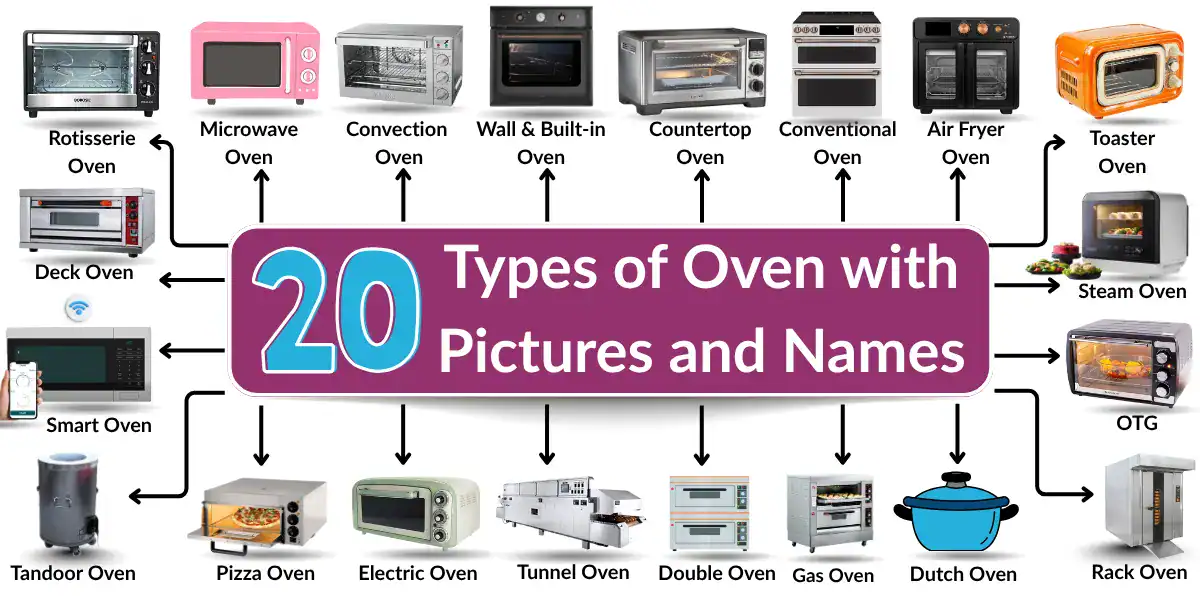
What are the Main 20 Types of Ovens
Ovens come in many designs and heating styles. Each type works differently and suits a specific cooking need. Here are the 20 different types of oven used in homes and commercial kitchens.
- Conventional Oven
- Convection Oven
- Microwave Oven
- OTG (Oven Toaster Griller)
- Toaster Oven
- Electric Oven
- Gas Oven
- Steam Oven
- Air Fryer Oven
- Pizza Oven
- Rotisserie Oven
- Tandoor Oven
- Deck Oven
- Rack Oven
- Tunnel Oven
- Wall & Built-in Oven
- Double Oven
- Countertop Oven
- Smart Oven
- Dutch Oven
Let’s explore each type of oven in detail along with its main uses and benefits.
1. Conventional Oven
A conventional oven is one of the simplest and most widely used ovens. It heats food through elements fitted at the top and bottom. The heat spreads naturally without a fan. It is simple to use and perfect for everyday cooking and baking.
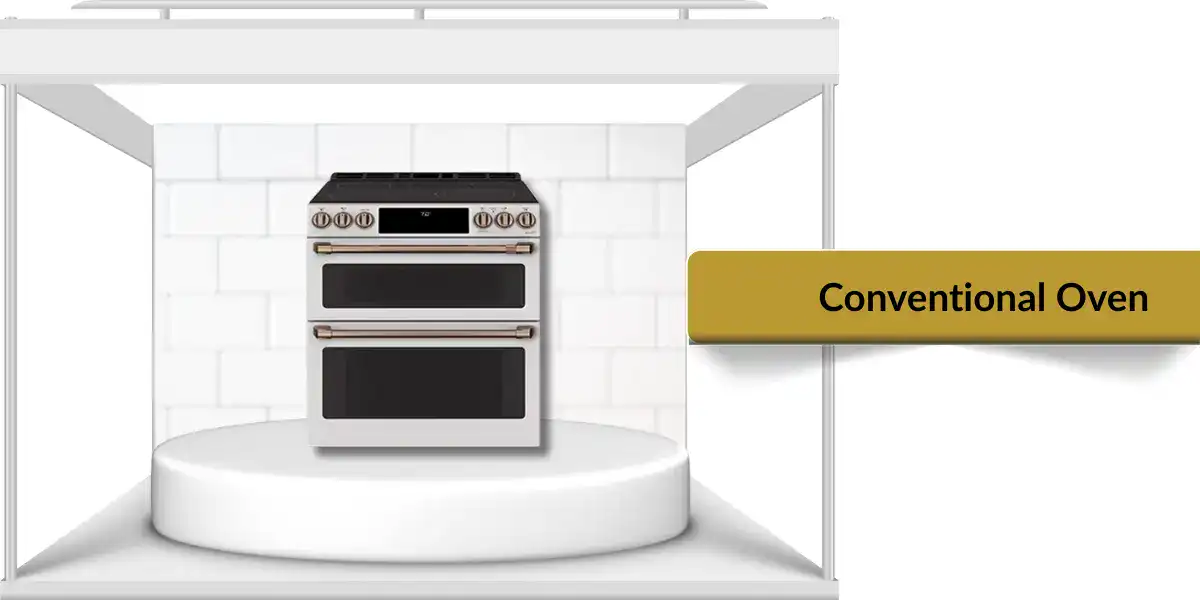
Common Uses:
- Bake cakes, cookies, and bread
- Roast chicken or vegetables
- Cook casseroles and pasta dishes
2. Convection Oven
A convection oven uses a built-in fan to spread hot air evenly inside. This helps food cook faster and more evenly than in a conventional oven. It saves time and gives food a nice, crisp texture. It’s great for people who love baking or roasting at home.
Common Uses:
- Bake cookies, pastries, and pies
- Roast meat, fish, and vegetables
- Reheat food evenly without drying it out
3. Microwave Oven
A microwave oven works by producing electromagnetic waves that warm food fast and evenly. It saves time and makes daily cooking easier. Most modern homes use it for quick meals, reheating, or defrosting frozen food. You can also explore different types of microwave oven to know which one suits your cooking needs best.
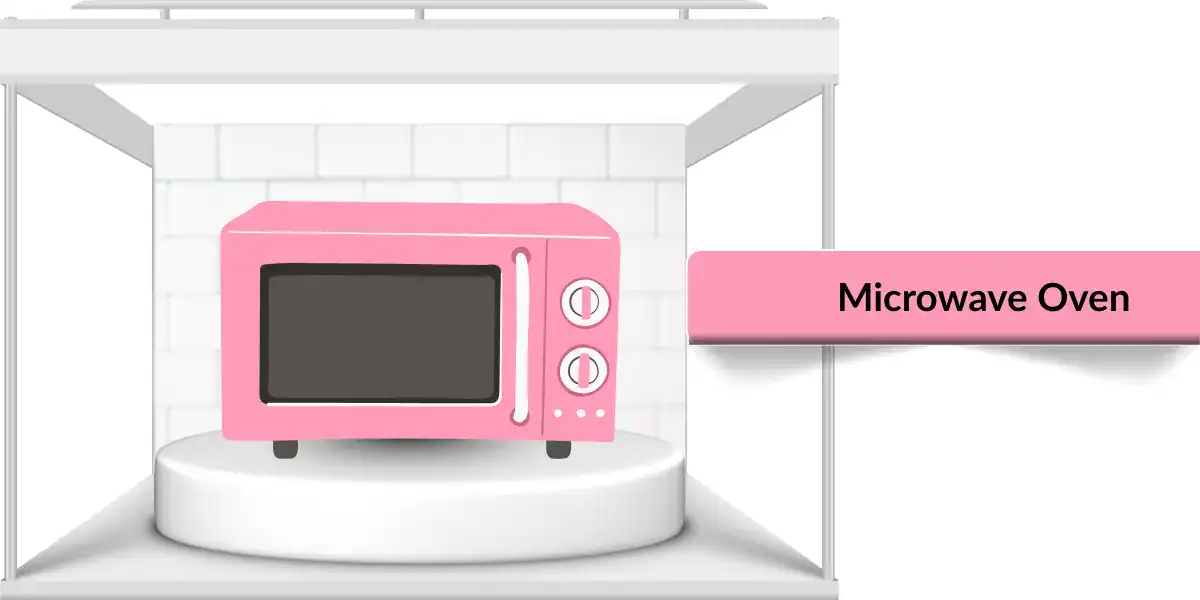
Common Uses:
- Reheat cooked food in minutes
- Defrost frozen items safely
- Cook quick meals like popcorn or mug cakes
4. OTG (Oven Toaster Griller)
An OTG is a small electric oven that can bake, toast, and grill food easily. It uses heating rods to cook food evenly from the top and bottom. Unlike a microwave oven, it works with dry heat instead of microwave energy, which helps food turn crisp and golden. OTGs are great for home bakers and those who enjoy grilled or toasted snacks. They are simple to use and consume less power than large ovens.
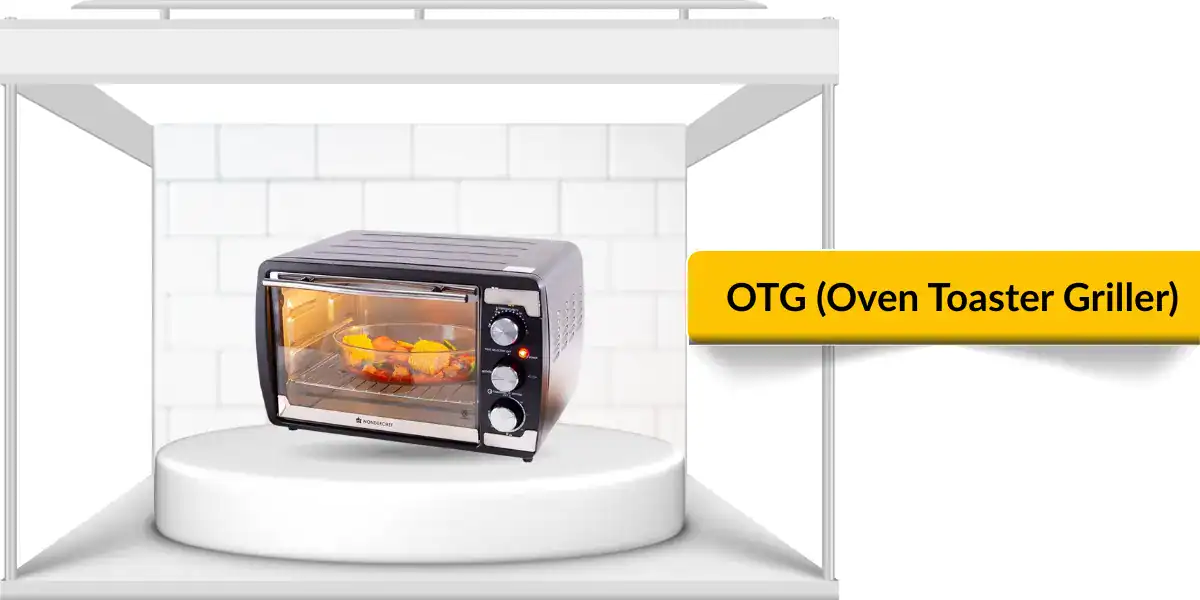
Uses:
- Bake cakes, cookies, and bread
- Toast sandwiches or buns
- Grill paneer, chicken, or vegetables
5. Toaster Oven
A toaster oven is a small and handy appliance used for quick cooking tasks. It works like a mini oven and can toast, bake, or reheat small meals easily. It heats up faster than large ovens and fits perfectly in small kitchens.
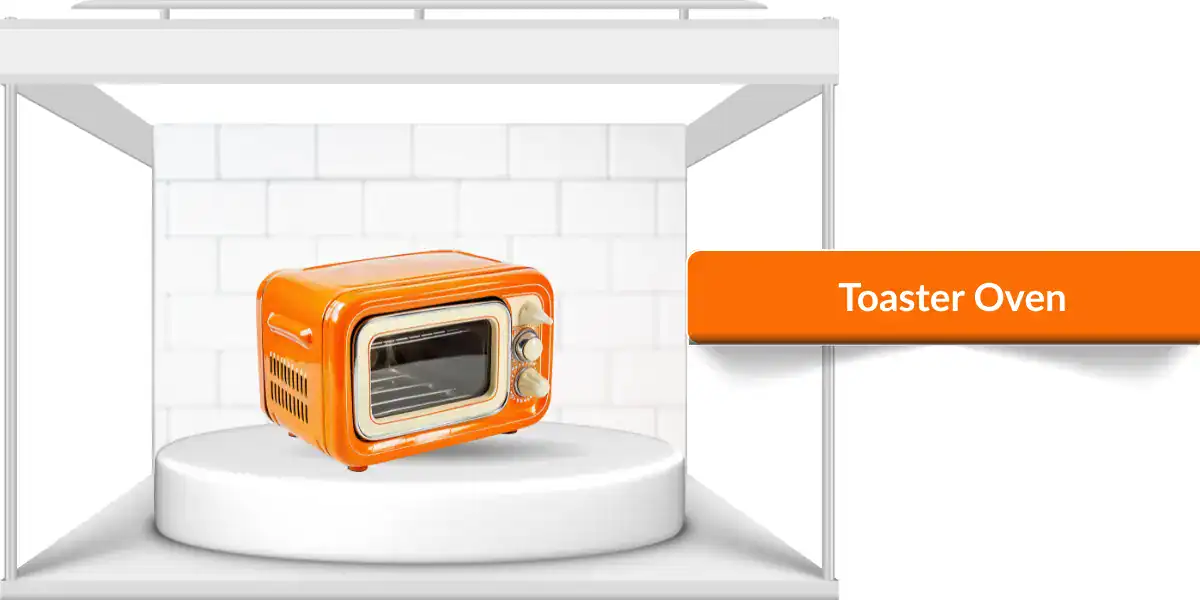
Uses:
- Toast bread and buns
- Bake small cakes or pizzas
- Reheat leftovers
- Melt cheese or make crispy snacks
6. Electric Oven
An electric oven runs on electricity and uses heating elements to cook food evenly. It offers better temperature control and is great for precise baking and roasting. It is cleaner and safer than gas ovens, making it popular for home and professional kitchens.
Common Uses:
- Bake cakes, pastries, and bread
- Roast meat and vegetables
- Reheat or slow-cook dishes
7. Gas Oven
A gas oven runs on LPG or natural gas and heats up quickly. It provides instant temperature control, which is useful for fast cooking. Many chefs prefer it because it gives food a natural, smoky flavor. It also works well during power cuts, unlike electric ovens.
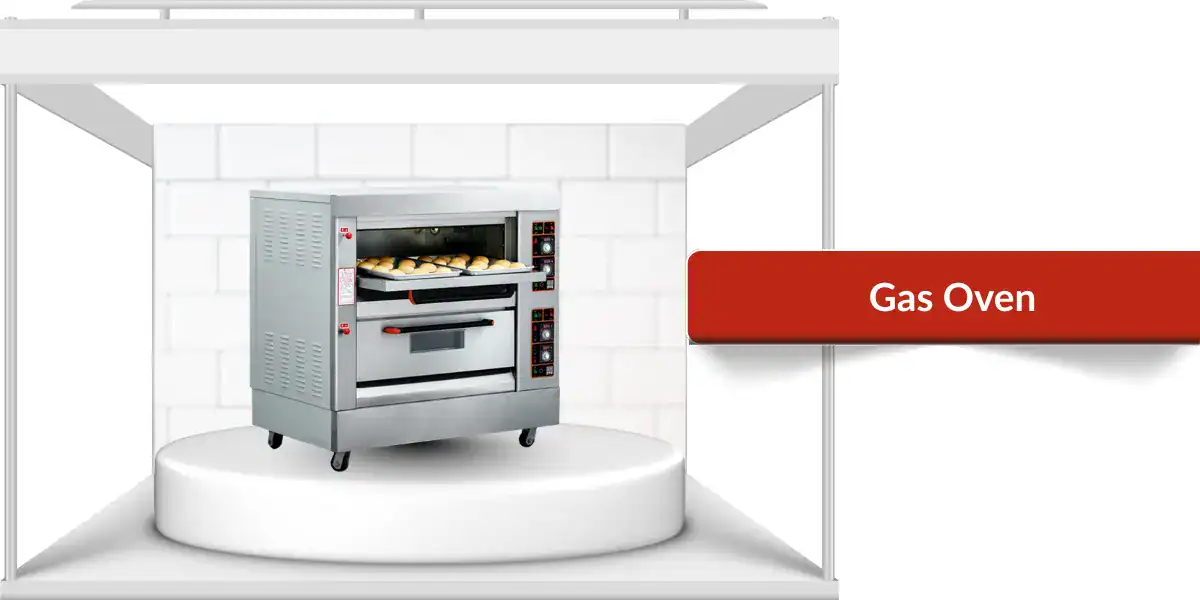
Uses:
- Bake bread and pizzas
- Roast chicken or fish
- Cook large meals efficiently
8. Steam Oven
A steam oven cooks food using hot steam instead of dry heat. It helps lock in moisture, keeping food soft and full of nutrients. This type of oven is perfect for people who prefer healthy and oil-free cooking. It also prevents food from drying out or burning.
Uses:
- Steam vegetables, fish, and dumplings
- Reheat rice or pasta without drying
- Bake soft bread or buns
- Cook baby food and low-fat meals
9. Air Fryer Oven
An air fryer oven prepares food by blowing hot air all around it for even cooking. It needs little or no oil to prepare meals. It gives a crispy outer layer similar to deep-frying, but is much healthier. This oven is a great choice for people who want fried-style food without extra calories. It also cooks faster than traditional ovens.
Common Uses:
- Fry French fries, nuggets, or samosas
- Bake muffins or small pizzas
- Roast chicken wings or vegetables
- Reheat leftovers while keeping them crisp
10. Pizza Oven
A pizza oven can heat up to very high temperatures, usually between 400°C to 500°C, to bake food quickly and evenly. It creates a crispy crust while keeping the inside soft and cheesy. These ovens can be wood-fired, gas, or electric, based on your setup. They are perfect for pizza lovers who want restaurant-style results at home.
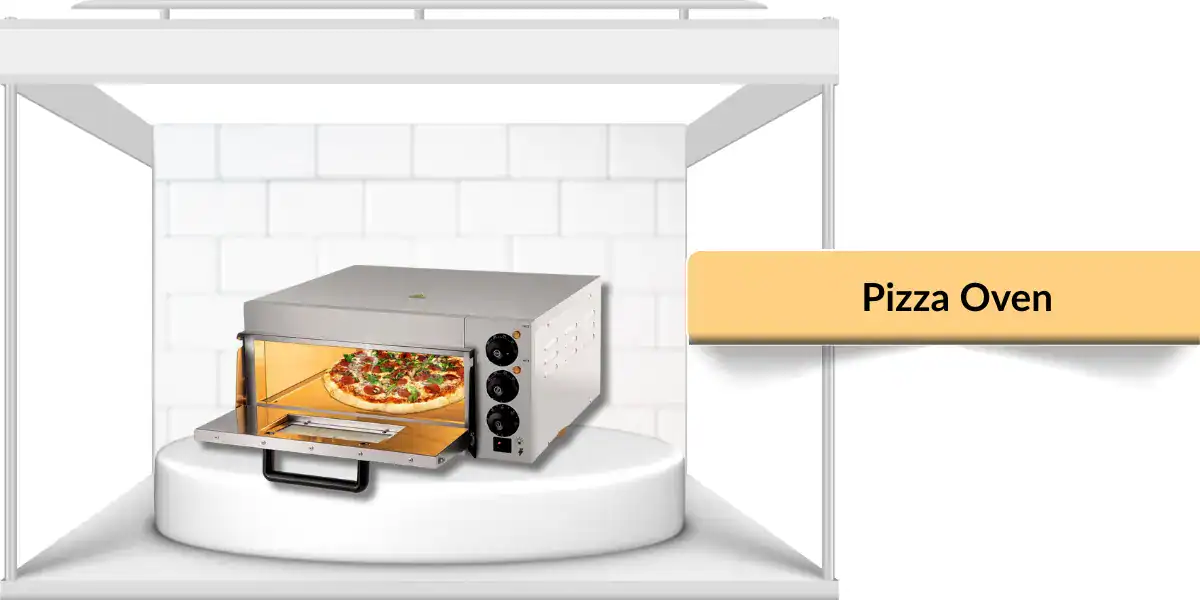
Uses:
- Bake pizzas with crispy bases
- Cook flatbreads or naan
- Roast vegetables at high heat
- Bake calzones or garlic bread
11. Rotisserie Oven
A rotisserie oven cooks food by slowly rotating it near a heat source. This steady rotation makes the food cook evenly and stay juicy inside. It’s perfect for getting that crispy, golden texture without using much oil.
Uses:
- Roast whole chicken or turkey
- Make kebabs or paneer tikka
- Cook shawarma-style dishes
12. Tandoor Oven
A tandoor oven is a clay or metal oven that uses charcoal or gas for high-heat cooking. It gives food a smoky flavor and crisp texture. The heat comes from all sides, which helps cook food quickly and evenly. Tandoors are common in Indian kitchens and restaurants.
Common Uses:
- Bake naan or roti
- Cook tandoori chicken or kebabs
- Roast vegetables with a smoky taste
13. Deck Oven
A deck oven has flat baking decks made of stone or metal that hold and spread heat evenly. It is mostly used in bakeries and pizzerias for consistent results. Each deck works separately, so you can bake different items at the same time. It gives food a crisp base and soft center.
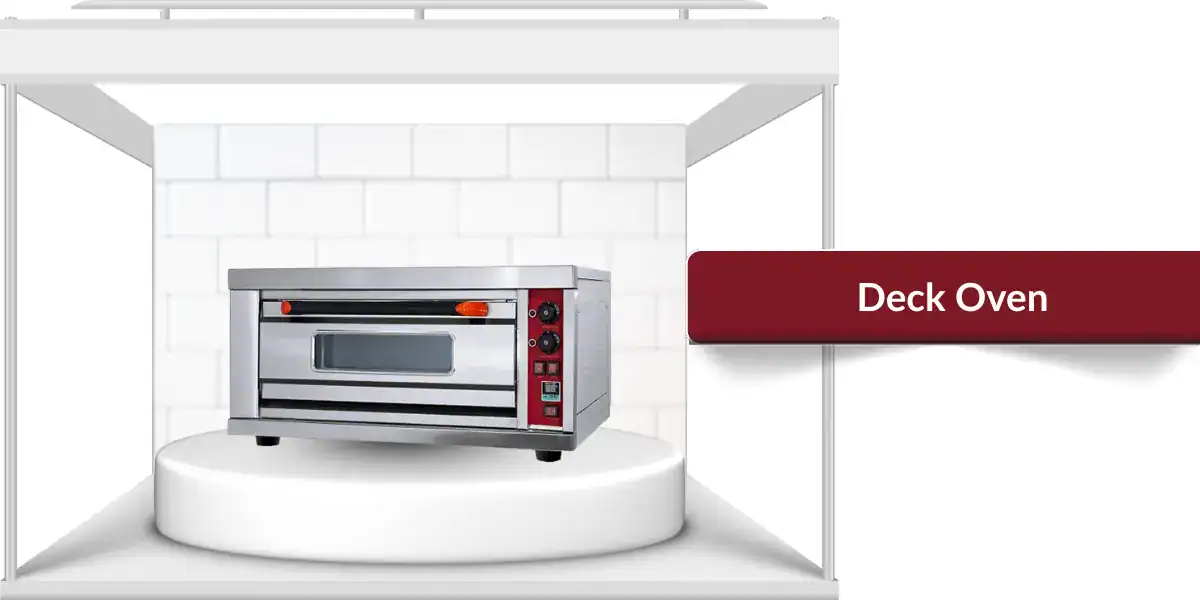
Common Uses:
- Bake bread, cakes, and pastries
- Make pizzas or cookies
- Roast meat or vegetables in batches
14. Rack Oven
A rack oven is a large commercial oven with multiple racks that hold trays of food. Hot air moves evenly inside, allowing all trays to cook at the same time. It is perfect for bakeries, hotels, and catering businesses that bake in bulk.
Uses:
- Bake bread, muffins, and pastries in large quantities
- Roast meat or poultry for events
- Dry or reheat baked goods evenly
15. Tunnel Oven
A tunnel oven is a long, continuous oven used in large food factories. Food moves through it on a conveyor belt while it bakes or cooks evenly. It saves time and energy by handling large batches automatically. This oven is common in commercial baking and packaged food production.
Uses:
- Bake biscuits, cookies, and bread in bulk
- Cook frozen or ready-to-eat meals
- Dry or crisp snacks for packaging
16. Wall & Built-in Oven
A wall or built-in oven is fixed inside a kitchen cabinet or wall space. It saves counter space and gives the kitchen a clean, modern look. These ovens are electric or convection-based and often come with smart features. They are easy to install at eye level, making them convenient to use.
Common Uses:
- Bake cakes, cookies, and casseroles
- Roast meat or vegetables
- Grill dishes with precise temperature control
17. Double Oven
A double oven has two separate cooking compartments that can work at different temperatures. It allows you to cook multiple dishes at once without mixing flavors. This oven is ideal for large families or people who cook often. It saves time and offers great flexibility during meal prep.
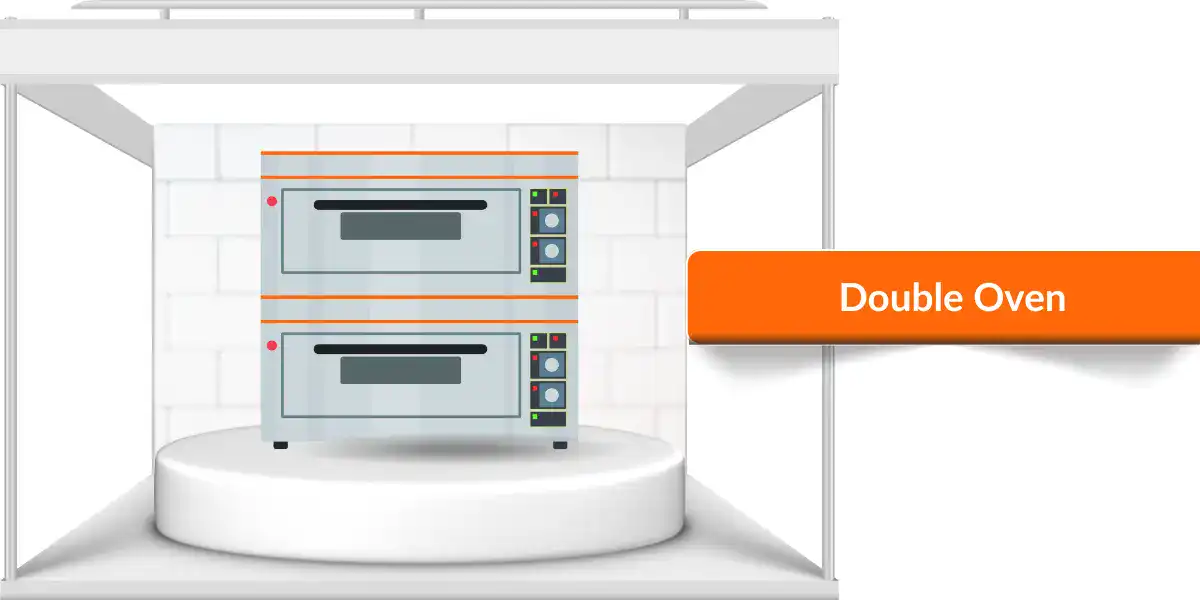
Common Uses:
- Bake and roast at the same time
- Cook main dishes and desserts separately
- Prepare food for parties or family gatherings
18. Countertop Oven
A countertop oven is a small, portable oven that sits on your kitchen counter. It works like a regular oven but takes up less space. It’s perfect for small families, bachelors, or anyone with limited kitchen space. These ovens are easy to use, energy-efficient, and heat up quickly.
Uses:
- Bake small cakes, pizzas, and cookies
- Toast bread or sandwiches
- Reheat and roast small meals
19. Smart Oven
A smart oven is a modern appliance that connects to Wi-Fi or Bluetooth for remote control. You can set temperature, timer, and cooking mode using a smartphone or voice assistant. It often includes multiple functions like baking, air frying, and grilling in one unit. Smart ovens make cooking easier and more precise.

Uses:
- Bake and roast with preset modes
- Air fry or grill without manual settings
- Control and monitor cooking through a mobile app
20. Dutch Oven
A Dutch oven is a thick, heavy pot made of cast iron or ceramic. It holds heat well and cooks food evenly for a long time. You can use it on a stove or inside a regular oven. It’s perfect for slow-cooked and one-pot meals.

Common Uses:
- Bake crusty bread
- Cook stews, soups, or curries
- Braise meat and vegetables
- Prepare casseroles or pot roasts
You may also Like these posts:
What is Combination Microwave Oven – Features, Uses & Benefits
Complete Microwave Oven Utensils List: What to Use and Avoid
Conclusion
So, friends, we have now explored all 20 types of oven and how each one works. From simple countertop ovens to smart ones, every type makes cooking easier in a different way. Pick the one that fits your daily use and budget.
Did this guide help you? Feel free to share it with others or leave your feedback below!
FAQs about Different Types of Oven
If you’re new to ovens, you might have a few questions before choosing one. Here are simple answers to help you learn about the different types of kitchen ovens.
What are the main types of ovens?
There are many types of ovens like conventional, convection, microwave, OTG, electric, gas, steam, and more. Each one works differently and is used for specific cooking styles such as baking, grilling, or reheating food.
Which oven is best for baking at home?
A convection oven or an OTG is best for home baking. Both spread heat evenly and create a nice brown texture. You can bake cakes, cookies, and bread easily in them.
What is the difference between a microwave oven and an OTG?
A microwave oven uses microwave energy to heat and cook food quickly. An OTG uses heating rods to bake, toast, and grill. OTG gives food a crisp finish, while a microwave cooks faster but doesn’t brown food.
Are convection ovens better than conventional ovens?
Yes, convection ovens are more efficient. They have a built-in fan that moves hot air around the food. This helps it cook more quickly and evenly. Conventional ovens heat from the top and bottom without air circulation.
Which type of oven uses less electricity?
Microwave ovens and air fryer ovens usually consume less electricity than large electric or gas ovens. They cook faster and use focused heating, which saves power.
Can I bake in a microwave oven?
You can bake in a convection microwave oven, not a solo one. Convection models have a fan and heating element for baking, while solo microwaves are for heating and defrosting only.
What type of oven is used in restaurants or bakeries?
Commercial kitchens often use deck, rack, or tunnel ovens. These ovens can bake in large quantities and maintain steady heat, which is perfect for bread, pizza, or pastries.
What is a smart oven?
A smart oven connects to Wi-Fi or apps. It can be controlled by your phone or voice. It adjusts temperature and time automatically to cook food perfectly.
Which oven is best for grilling food at home?
OTG, grill microwave, or air fryer ovens are great for grilling. They give a crispy outer layer and cook food evenly without deep frying.
What is a Dutch oven used for?
A Dutch oven is a heavy cast-iron pot used for slow cooking, baking bread, and making stews. It holds heat for a long time and cooks food evenly, even on low flame or inside an oven.
Which oven is easiest to clean?
Steam ovens and smart ovens are easiest to clean. Many come with self-clean or steam-clean modes that remove stains quickly.


